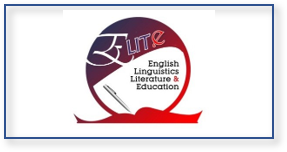An Exploratory Interview Study About Teacher Strategies in Encouraging Secondary Students Participation in EFL Writing Classroom
DOI:
https://doi.org/10.15642/ijet2.2022.11.2.138-153Keywords:
EFL Classroom, strategies, students' participation, teacher's roleAbstract
This research paper exploring teachers' strategies in encouraging EFL secondary students to participate in writing classes. The researcher conducted research in one of the public schools in district Karawang and appointed one of the teachers at the school as a participant. In this research, researcher employed qualitative design with the research method Interview Study. The researcher collects data using Semi-structured Interviews and documentation analysis. In addition, the data obtained were analyzed by researcher in several stages so that the findings could be identified. The findings show participant uses six strategies in encouraging EFL secondary students to participate in writing classes, namely, Building Motivation and Confidence in Learning Writing, Using English as a Classroom Language, Using Technology in Learning Writing, Mandatory Using Dictionary, Interweaving Assessment and Teaching, Proper Time Management.
Downloads
References
Aslan, R., & Şahin, M. (2020). ‘I FEEL LIKE I GO BLANK’: IDENTIFYING THE FACTORS AFFECTING CLASSROOM PARTICIPATION IN AN ORAL COMMUNICATION COURSE. TEFLIN Journal - A Publication on the Teaching and Learning of English, 31(1), 19. https://doi.org/10.15639/teflinjournal.v31i1/19-43
Bhatti, N., Memon, S., & Pathan, H. (2016). Investigating the Perceptions of Pakistani English Language Learners on Language Learning Anxiety in EFL Classroom. Advances in Language and Literary Studies, 7(5), 23–34. https://doi.org/10.7575/aiac.alls.v.7n.5p.23
Correa, R., Lara, E., Pino, P., & Vera, T. (2017). Relationship Between Group Seating Arrangement in the Classroom and Student Participation in Speaking Activities in EFL Classes at a Secondary School in Chile. SciELO, 45, 145–158. http://www.scielo.org.co/scielo.php?pid=S0123-48702017000100011&script=sci_arttext&tlng=en
Creswell, J. W. (2009). Research Design: Qualitative, Quantitative, and Mixed Methods Approaches (3rd ed.). SAGE Publications, Inc.
Edwards, A., & Westgate, D. P. G. (2005). Investigating Classroom Talk (2nd ed.). Routledge. https://doi.org/10.4324/9780203975718
Ghalley, L. R., & Rai, B. M. (2019). Factors Influencing Classroom Participation: A Case Study of Bhutanese Higher Secondary Student. Asian Journal of Education and Social Studies, 4(3), 1–14. https://doi.org/10.9734/ajess/2019/v4i330118
Harper, J., & Chen, H. (2018). Group Dynamics and Student Participation in a Chinese Setting: Teacher and Observer Perspectives. Journal of English Language Teaching and Linguistics, 3(1), 21–40. https://doi.org/10.21462/jeltl.v3i1.91
Iskandar, I. (2017). Peningkatan Partisipasi Aktif Dan Hasil Belajar Siswa Kelas VII. E Dalam Pembelajaran Pendidikan Kewarganegaraan Melalui Penerapan Metode Pembelajaran Kooperatif Tipe STAD Di SMP Negeri 7 Pujut Lombok Tengah Tahun Pelajaran 2015/2016. Jurnal Pendidikan Mandala, 2(2), 46–64. https://doi.org/dx.doi.org/10.36312/jupe.v2i2.210
Kvale, S., & Brinkmann, S. (2014). InterViews: Learning the Craft of Qualitative Research Interviewing (3rd ed.). SAGE Publications, Inc.
Lam, Y. W., Hew, K. F., & Chiu, K. F. (2018). Improving argumentative writing: Effects of a blended learning approach and gamification. Language Learning & Technology, 22(1), 97–118. https://doi.org/dx.doi.org/10125/44583
Lee, I. (2011). Issues and challenges in teaching and learning EFL writing: The case of Hong Kong. In T. Cimasko & M. Reichelt (Eds.), Foreign language writing instruction: Principles and practices (1st ed., pp. 118–137). Parlor Press LLC. https://books.google.co.id/books?id=wKoWEAAAQBAJ&dq=challenges+in+teaching+writing&lr=&source=gbs_navlinks_s
Liu, J. (2001). Asian Students’ Classroom Communication Patterns in U.S. Universities : An Emic Perspective Contemporary Studies in Second Language Learning. Greenwood Publishing Group.
McDonald, E. S., & Hershman, D. M. (2010). Classrooms that Spark!: Recharge and Revive Your Teaching (2nd ed.). John Wiley & Sons.
Noviyanti, A. K., & Setyaningtyas, E. W. (2017). Partisipasi Pembelajaran Siswa Dalam Pembelajaran Dengan Classroom Rules. Journal of Education Research and Evaluation, 1(2), 65. https://doi.org/10.23887/jere.v1i2.10071
Peloghitis, J. (2016). Difficulties and Strategies in Argumentative Writing: A Qualitative Analysis. In P. Clements, A. Krause, & H. Brown (Eds.), TRANSFORMATION IN LANGUAGE EDUCATION (pp. 399–406). JAPAN ASSOCIATION FOR LANGUAGE TEACHING.
Sormin, D., & Rahma Rangkuti, F. (2018). STRATEGI GURU DALAM MEMBENTUK KARAKTER SISWA MI TERPADU MUTIARA KOTA PADANGSIDIMPUAN. TAZKIR: Jurnal Penelitian Ilmu-Ilmu Sosial Dan Keislaman, 4(2), 219. https://doi.org/10.24952/tazkir.v4i2.1107
Sukidin, Basrowi, & Suranto. (2002). Manajemen Penelitian Tindakan Kelas (1st ed.). Insan Cendikia.
Turner, J., & Patrick, H. (2004). Motivational Influences on Student Participation in Classroom Learning Activities. Teachers College Record, 106(9), 1759–1785. https://www.tcrecord.org











